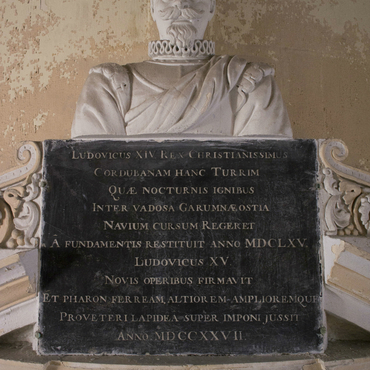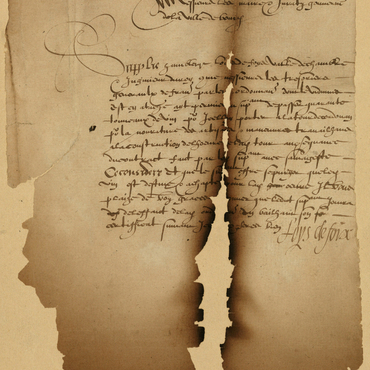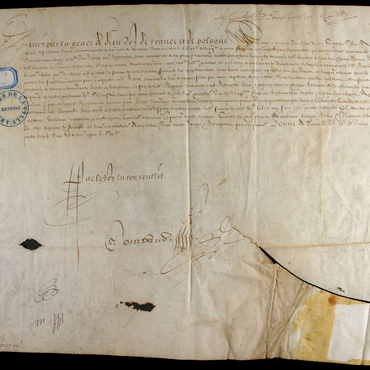
- Home
- A Renaissance monument
- A royal tower
- Louis de Foix, a Renaissance engineer
Louis de Foix is the most prominent and the most enigmatic figure associated with the history of Cordouan. His bust gazes down at visitors to the lighthouse's chapel, where a panegyric attributed to Pierre de Brach recalls the "infinite glory" that this exceptional structure has conferred upon this Renaissance man. We know neither when he was born – around 1535 – nor when he died, before he could complete the tower. According to a story dating back to the eighteenth century, Louis de Foix is buried at Cordouan. In the tradition of the nineteenth century scholars that were the first to explore the history of Cordouan, it was Claude Grenet-Delisle who produced the most complete biography of de Foix: "clock-maker, engineer and architect to four kings". Grenet-Delisle unearthed historical documents, including the Mémoires of Jacques-Auguste de Thou (1553–1617), a magistrate and author who knew Louis de Foix, and who offered some rare clues as to his (Parisian) origins and his career. De Foix began working in 1560 as a clock-maker in the service of the king of Spain, Philip II (1527–1598). He was fascinated by machines, a Renaissance engineer who learned hydraulics from the architects working on the royal residence of El Escorial. Working for both the kings of Spain and France, in 1571 de Foix was entrusted with diverting the flow of the Adour River in order to provide fresh impetus to the port of Bayonne. He built a dam at Trossoat to divert the river into a canal that was 900 toises long (about 1,800 metres). The river's new bed was definitively dug out thanks to a flood in October 1578. Louis de Foix became "the man who stole the river", as Fernand Lot wrote in a historical novel published in the 1930s. Thus, in the 1580s, the Cordouan project was entrusted to this experienced engineer, then in his fifties.


